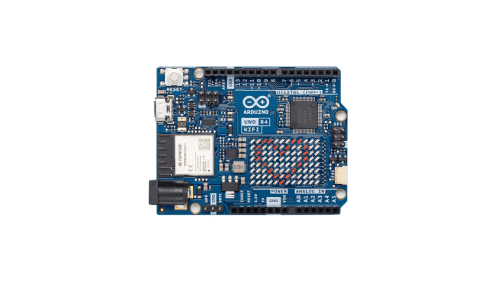
Qualcomm Bets Big on the Future of Edge AI with Arduino Buyout
Qualcomm Bets Big on the Future of Edge AI with Arduino Buyout
Chip giant aims to win over 33 million makers and rewire the path from prototype to production
SAN DIEGO — Qualcomm has just made a move that could shake up the world of edge computing and robotics. On Tuesday, the company announced it’s buying Arduino, the Italian-born open-source hardware platform that’s become a household name for hobbyists, students, and startups tinkering with electronics.
The price tag hasn’t been revealed, but the strategy is clear. Qualcomm wants to fuse its growing edge AI ambitions with Arduino’s massive community—an estimated 33 million strong. Arduino will stay independent, keeping its brand and multi-vendor hardware approach. That’s a critical detail, since makers are famously wary of corporate takeovers.
The first fruit of the deal is already here: the Arduino UNO Q, a Linux-ready board that’s unlike anything Arduino has released before. Starting at about $44, it runs on a “dual-brain” setup. On one side sits Qualcomm’s Dragonwing QRB2210 processor, handling Linux apps, AI, and graphics. On the other, an STMicroelectronics STM32U585 microcontroller manages real-time inputs and outputs—the bread and butter of classic Arduino boards.

Where Innovation Begins
For decades, Arduino has been the training wheels for engineers and inventors. Countless careers in tech started with a blinking LED on one of its boards. Qualcomm clearly understands this. By stepping in at the prototyping stage, the company isn’t just selling chips—it’s winning loyalty early, when developers are forming habits that last a lifetime.
Analysts call this a “developer funnel” strategy. The logic goes like this: if you capture creators when they’re still sketching out ideas, you’re more likely to sell them higher-powered processors when their projects grow into real businesses. For Qualcomm, that means nudging makers toward its QRB and QCS system-on-modules, which carry much better profit margins than low-cost dev kits.
This acquisition also fits into Qualcomm’s bigger picture. With smartphones no longer the sole growth engine, the company is pushing into everything from cars to IoT. Buying Foundries.io for Linux management, partnering with Edge Impulse on AI tools, and now adding Arduino to the mix—Qualcomm is building a complete edge computing ecosystem.
Two Brains, One Board
The UNO Q isn’t just another Arduino. It solves a headache engineers have lived with for years. Boards like Raspberry Pi are great at running Linux, but their timing can be sloppy—bad news if you’re building a robot arm. Classic Arduino boards handle precise timing beautifully, but they choke when asked to run computer vision or machine learning.
The UNO Q tackles this by splitting the workload. The Dragonwing chip powers Linux with up to 4GB RAM and 32GB storage, plus Wi-Fi 5, Bluetooth 5.1, an Adreno GPU, and camera support. Meanwhile, the STM32U585 microcontroller—running Zephyr RTOS—handles the real-time tasks that make robots, drones, and industrial gear tick.
To tie it all together, Arduino is rolling out “App Lab,” a new development environment. It lets you jump between Arduino sketches, Linux-side Python, GPU programming, and AI models without losing your sanity. That’s no small feat. Getting two processors to cooperate is like teaching twins to share toys—it looks easy on paper but often turns into a debugging nightmare.
The Competitive Shake-Up
So what does this mean for the rest of the field?
For Raspberry Pi, the challenge is obvious. The UNO Q does everything a Pi does, while also handling real-time tasks natively—no need for an extra microcontroller. That could be a game-changer for classrooms, robotics labs, and startups trying to keep costs low.
NVIDIA’s Jetson platform is less directly threatened, since it still blows everyone else away on raw AI power. But at under $50, the UNO Q may win over projects where “good enough” AI is more appealing than expensive high-end performance. NVIDIA’s spotty supply history doesn’t help its case either.
As for traditional microcontroller vendors, things get trickier. Arduino chose STMicroelectronics for the UNO Q’s second processor, signaling it’s still committed to vendor neutrality. But if Qualcomm starts tilting the ecosystem toward its own chips, companies like Renesas, NXP, and Microchip could see their slice of the pie shrink.
Can Open Source Stay Open?
Beyond the tech specs lies a deeper question: will Arduino’s culture survive? The platform isn’t just about boards and chips—it’s a symbol of open access and grassroots innovation. Makers will be watching Qualcomm closely to see if it lives up to its promise of independence.
Skeptics have reasons to doubt. History is full of acquisitions where “independent subsidiary” quickly became corporate assimilation. The community will judge Qualcomm not on words but on actions: whether non-Qualcomm chips get equal support, whether documentation stays broad and unbiased, whether open-source contributions flow freely.
Any hint that Qualcomm is pushing its own silicon too hard could backfire, alienating the very audience it’s trying to court.
What’s in It for Investors?
From Wall Street’s perspective, this isn’t about immediate revenue. Think of it as planting seeds. Even if just a tiny fraction of Arduino’s 33 million users build commercial products—and those products scale up with Qualcomm’s higher-margin modules—the payoff could be significant.
One scenario: if only one percent of users move from hobby projects to small production runs, and just a fraction of those graduate to commercial volumes, Qualcomm could see tens of millions in new revenue within a few years. That’s before factoring in services like AI model updates or security add-ons.
Still, execution is everything. Supply chain hiccups, flaky development tools, or pricing surprises could derail the whole plan. Investors tracking the space will want to watch developer adoption, kit availability, and early case studies showing prototypes turning into real products.
The Road Ahead
The markers of success are easy to spot. If App Lab downloads spike, GitHub projects flourish, and makers start sharing UNO Q-powered robots or AI gadgets, Qualcomm’s gamble will look smart. If, on the other hand, boards are constantly sold out or community trust erodes, the company could face a serious backlash.
For now, the UNO Q stands as a bold statement: Qualcomm isn’t content to just sell chips to phone makers anymore. It wants to be at the workbench with the next generation of inventors, right when they’re taking their first steps.
And if those inventors grow up to build the next wave of billion-dollar tech companies, Qualcomm will already have a seat at the table.
House Investment Thesis
| Category | Summary |
|---|---|
| Event | Qualcomm acquires Arduino; terms undisclosed. Arduino to operate as an independent subsidiary. First product: Arduino UNO Q board (Qualcomm QRB2210 MPU + STM32U585 MCU) at ~$44. New App Lab IDE. |
| Core Thesis | A developer-funnel land-grab. Trades near-term financials for long-term option value in edge AI/robotics. Aims to re-rate Qualcomm's IoT narrative from "adjacent" to "owned on-ramp." |
| Strategic Logic | 1. Own the first prototype: Capture Arduino's ~33M-strong community to funnel projects toward Qualcomm silicon for production. 2. Bundle silicon + tools: Use Arduino's ecosystem and App Lab to simplify Qualcomm's Linux/ML stack. 3. Competitive triangulation: Outmaneuver Raspberry Pi on real-time I/O, Nvidia Jetson on cost/complexity, and partner with MCU vendors (for now). |
| Key Uncertainties | 1. Community Trust: Perceived or real loss of Arduino's vendor neutrality risks backlash. 2. Tooling Reality: Success hinges on a seamless developer experience (IPC, drivers, debug). 3. Supply/Pricing: Must maintain $44 price point and reliable stock. 4. Regulatory/Closing: Deal review could delay timelines. |
| Financial Framing | • Near-term: Immaterial P&L impact (FY'25-26). A long-dated call option. • Payback: Potential $25-150M annual SOM uplift from converting 1-2% of active developers to pilot runs on Qualcomm modules, plus software/services attach. |
| Competitive Implications | • Qualcomm: Gains low-end edge AI/robotics share. • Raspberry Pi: Pressured on education/robotics with real-time needs. • Nvidia: Nibbled at in cost-sensitive vision/robotics. • STMicro/etc.: Neutrality is a signal; risk of soft displacement long-term. |
| Execution Checklist | • Product/OSS: Public BSPs, reference designs, stable supply at ~$44. • Funnel → Revenue: App Lab adoption, project activity, case studies of prototypes moving to Qualcomm SOMs. • Culture/Trust: Maintain multi-vendor support in docs and boards. |
| Risks & Mitigations | • Backlash: Publish a neutrality charter, keep schematics open. • Toolchain Complexity: Ship "boring" reliable defaults for IPC and debugging. • Supply Chain: Pre-build kits, secure multi-ODM capacity. |
| Near-term Catalysts | • 0-3 months: Developer previews, vision demos, App Lab updates. • 6-12 months: "Arduino Pro" variants, first prototype-to-production stories. • 12-24 months: Market share shift in entry-level edge AI/robotics. |
| Portfolio Actions | • Qualcomm: Thesis-reinforcing, not a near-term trade. Add on execution beats (App Lab traction, UNO Q availability, SOM conversions). • Raspberry Pi: Monitor education kit SKU mixes for shifts. • Suppliers: Watch Qualcomm's SOM partners (e.g., Lantronix) for early volume signals. |
| Diligence Questions | 1. Specific guardrails and KPIs for vendor neutrality? 2. App Lab roadmap and SLA for camera pipelines and debugging? 3. Target conversion rate from Arduino prototypes to Qualcomm SOMs? 4. Education channel and SKU strategy? 5. Regulatory timeline and conditions? |
NOT INVESTMENT ADVICE